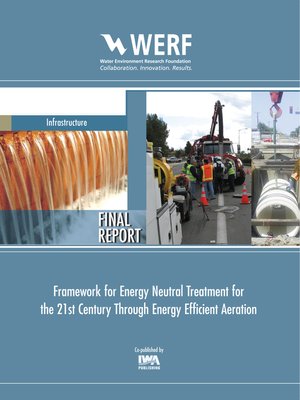Framework for Energy Neutral Treatment for the 21st Century through Energy Efficient Aeration
ebook ∣ WERF Research Report
By Diego Rosso

Sign up to save your library
With an OverDrive account, you can save your favorite libraries for at-a-glance information about availability. Find out more about OverDrive accounts.
Find this title in Libby, the library reading app by OverDrive.



Search for a digital library with this title
Title found at these libraries:
| Library Name | Distance |
|---|---|
| Loading... |
Clean and process water tests for aeration efficiency measurements were performed on a suite of diffusers in different processes for approximately one year. The research plan was set up to test the same diffusers in different processes and different diffusers in the same process. The most evident finding regarding the scaling factor for oxygen transfer efficiency in process water (±-factor) is that all diffusers seems to experience a decrease with time until reaching what appears a stabilization value. As time progressed, the diffuser performance decreased for all diffusers also in terms of diffuser head loss (or dynamic wet pressure DWP). At the same time, it was observed that once the diffuser have been colonized a relatively stable base/plateau of microbial species remains in the diffuser surface. Regarding the DNA concentration found on the membranes, the silicone membrane tube was the less fouled than the other membrane tubes. Although tested in different processes, the relative microbial abundance on the membrane diffusers was of the same magnitude. One should expect much higher fouling for the high-rate process, however this may be more pronounced as the fouling biofilm fully ripens, possibly after the first year of operation.






